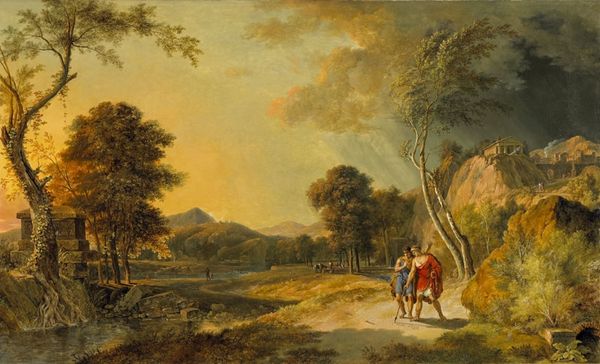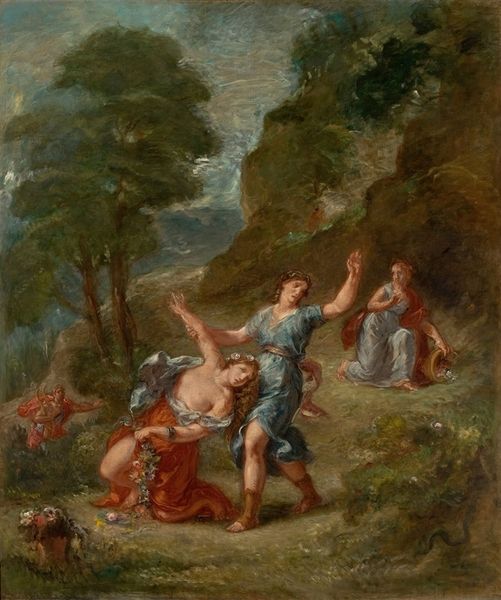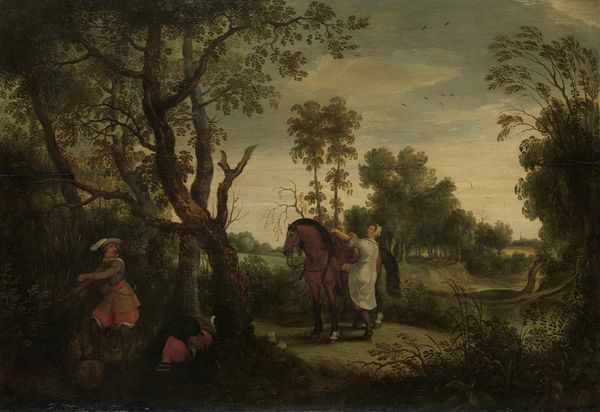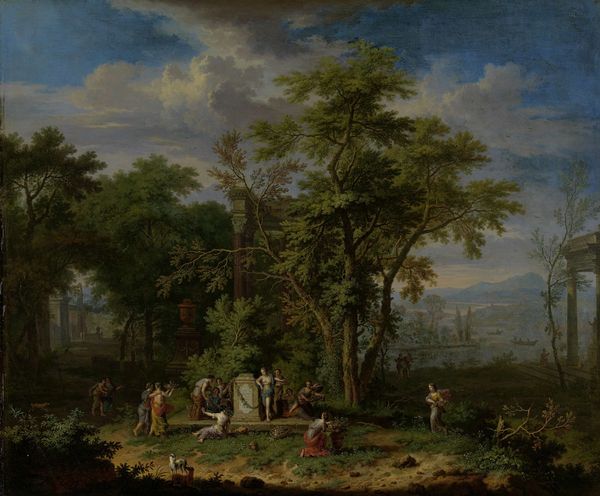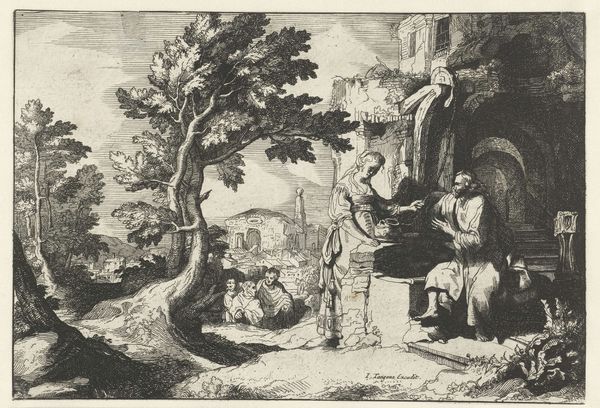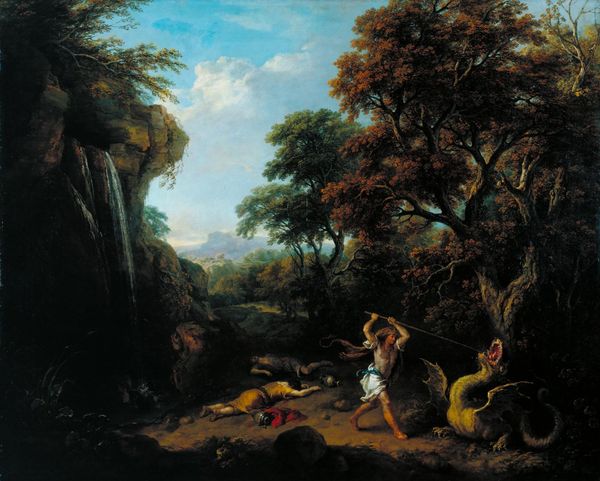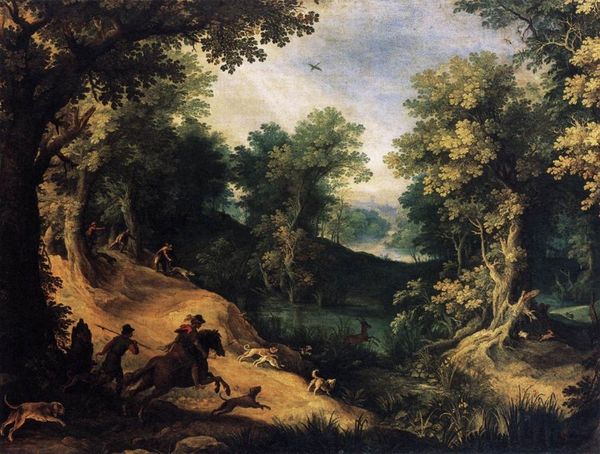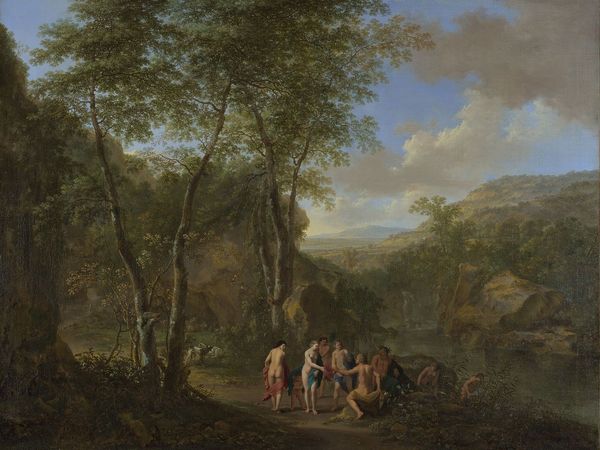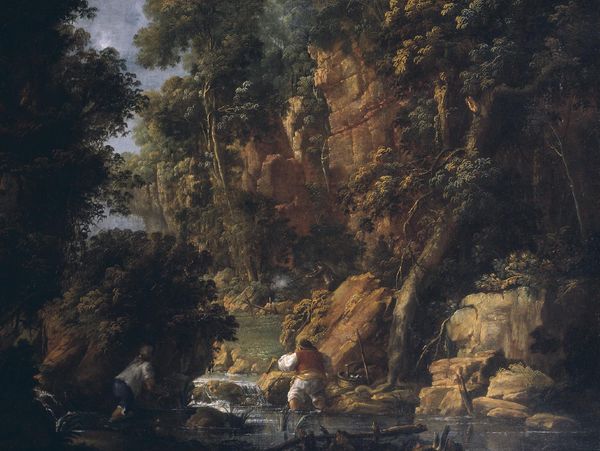
#
abstract painting
#
impressionist landscape
#
possibly oil pastel
#
oil painting
#
fluid art
#
acrylic on canvas
#
underpainting
#
painting painterly
#
surrealist
#
watercolor
Dimensions: height 16.5 cm, width 24 cm, depth 4 cm
Copyright: Rijks Museum: Open Domain
Curator: Eglon van der Neer painted "Tobias and the Angel" around 1690, rendering in oil an intimate interpretation of a well-known biblical story. Editor: It's surprisingly peaceful. The light is soft, diffused. The composition feels carefully constructed to emphasize a serene interaction between the figures within this lush landscape. It's almost…idyllic. Curator: Well, that sense of idyll is exactly what Van der Neer would have been aiming for. The story of Tobias is rooted in themes of healing, faith and divine intervention. And during the late 17th century, the art market had really taken off. So Biblical scenes that could also serve as decorative landscapes gained popularity. Patrons sought both morality and beauty in their artwork. Editor: How do you think the presence of a Black and White spotted dog affects the representation of identity? Is it acting like a visual counterpoint between the sacred, represented by the angel and perhaps, earthly realms? Curator: An interesting thought, though one must also consider the patronage of the work and reception amongst different socio-economic groups. Depictions of dogs, and specifically their breeds, reflected and reinforced established social structures. Here the animal offers a marker of wealth or social status alongside more direct representation via costuming, for example. What does this choice represent when presented to patrons with political power or clout? Editor: But even putting aside the animal, doesn't the work operate within and uphold its own hierarchy? Isn't the subtext of the interaction coded with assumptions around whose experience is prioritized? The angel takes the lead here in ways that re-inscribe power dynamics rather than question them. Curator: It’s easy to see modern resonances, isn't it? Art, even from centuries ago, offers us a way of understanding social norms and challenges within those contexts. Van der Neer's work continues to provoke thought, especially when we bring our own critical lenses. Editor: Absolutely. It underscores art's capacity not only to reflect, but to actively shape cultural perceptions and dialogues that continue even today.
Comments
No comments
Be the first to comment and join the conversation on the ultimate creative platform.
